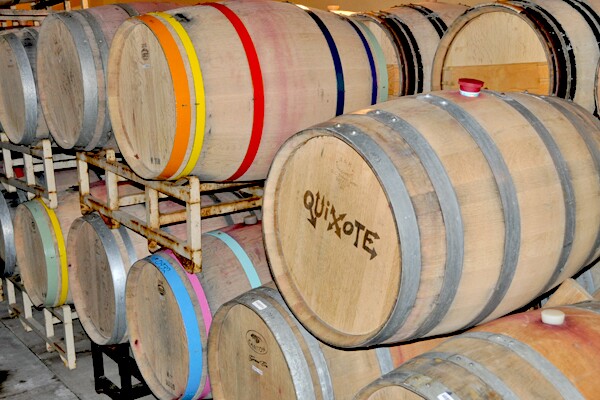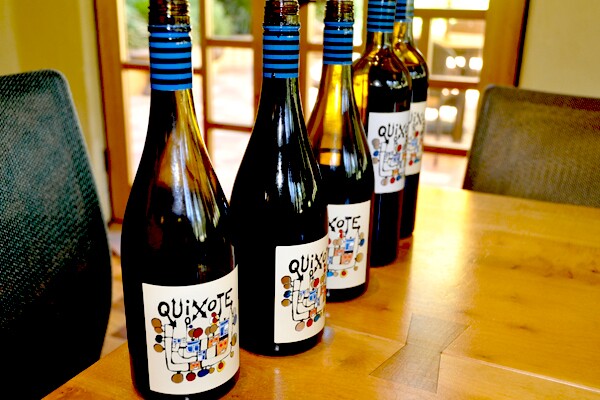Quixote Wines: To Drink at the Undrinkable Bar

Nobody quite knows who put the petite in Petite Sirah/Syrah, since it's anything but; sometimes I like to think of it as the bastard love child of cabernet sauvignon and zinfandel after a night they both imbibed too much of each other. (I know it's probably related to the grape Durif, but that's a less interesting story.) Big, bold, dark, delicious, it's easy to see why it's often used for blends as it's almost too much: a true teeth-stainer and a testament to tannins and the vintners who tame them. For when you drink one like Quixote's 2005 Petite Sirah, you realize some wine has to exist to take on the deepest BBQ of summer.
Quixote Winery is quite a story, one that brings together a court fight over where an apostrophe belongs, some prime Napa real estate, Man of La Mancha dreaminess, and the only building in the U.S. designed by famed artist Friedensreich Hundertwasser. Owner Carl Doumani originally owned Stags' Leap Winery, which got in a legal tangle with Stag's Leap Winery (a battle only a grammarian could relish), especially after the latter was one of the wines hailed in the famous Judgment of Paris tasting in 1976 that helped put California on the wine map. Turns out they both got to keep their names, and even made up and co-produced a wine called Accord to bury the hatchet. Eventually, though, Stags' Leap got too big for Doumani, and he sold, keeping enough land to grow grapes on 28 organically-farmed acres on the verdant hills off the Silverado Trail and focus on his favorites, Petite and Cab. The result, Quixote, is good news for anyone liking distinctive bold Napa reds.
Knowing he wanted something architecturally different for his new project, Doumani was at a loss until he spotted a calendar of Hundertwasser's work. The Viennese iconoclast had never worked in the U.S., but after some contacts and a visit that culminated in a skinny dip in the pond above the winery site, he decided he'd give it a go. That means a building without straight lines -- there's a great painting in the winery of him with his crooked ruler -- no two windows the same, a living roof, lots of whimsy, color, tile, and a spot for wines equally unique. Alas, Hundertwasser passed before the project finished, but his sense of playfulness continues right down to the multicolored labels on the bottles and the hoops on the cellar's barrels. The winery is a wonderful place to take a tour (by reservation only) and to get to see something akin to Vienna's Hundertwasserhaus without an expensive plane ticket. It's an adult Wonka Factory, minus the creepy, moralizing Oompa-Loompas.
As for the wines, well, this is a spot right next to Shafer Vineyards, so you know the grapes are brilliant, and with Robert Smith (not the Cure lead singer) as winemaker and Aaron Potts -- 2012 Food & Wine winemaker of the year -- as consultant, it's hard to go wrong. While the Petite Syrahs are the most distinctive, if you want an elegant yet still chewy Napa Cab, Quixote is no mere dream. And then there's the amazing, very small lot, Dulcinea rosé, under 13% alcohol, a lovely summer wine that exists even if it's not Google-able.
All of the wines, no matter the cost? Screwcap. Because Quixote hates corked wines and loves to be unusual.



